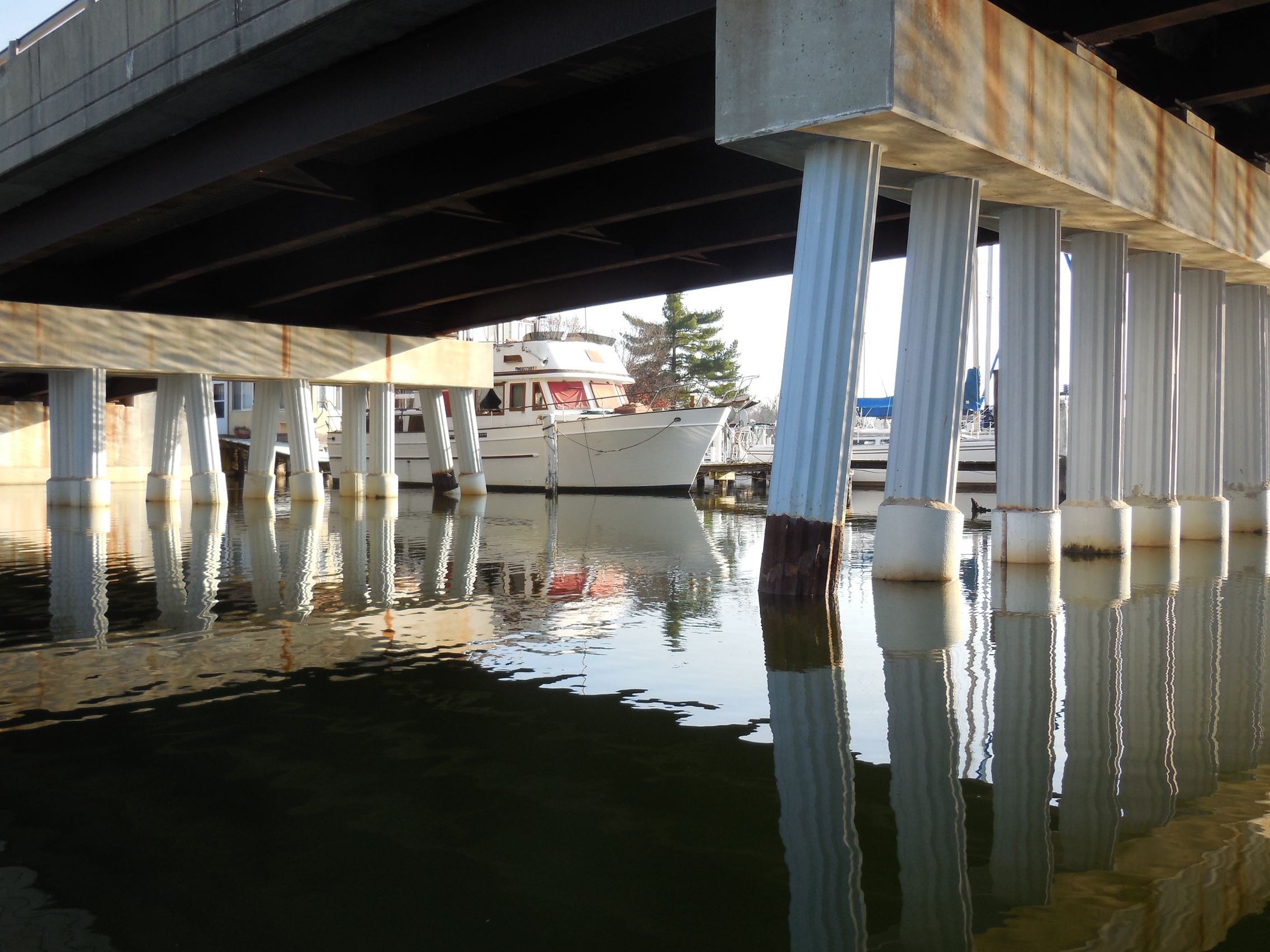Our plan had been to go east about the Delaware/Maryland/Virginia peninsula on the return trip and make port calls in the Atlantic coastal cities. We were unable to follow through due to a illness in Brian’s family, so we took the shortest route home through Delaware Bay and the C & D Canal.
We left Cohansey River at 0600 to take advantage of the north bound current through Delaware Bay. It was surreal to motor out through glassy water that the night before had been a raging white capped nightmare. We motored northwest up the bay until we arrived at the canal entrance.
Delaware Bay is a major shipping lane with the ports of Wilmington and Philadelphia up stream on the Delaware River. As we passed a power station a big dredge operation was working on our right. He radioed us and warned us to stay clear, only he didn’t identify himself. At the same time, and large tanker was coming down stream towards us, and called warning us to get out of the way . . . without identifying himself. At the time, I had no idea who was who, and they weren’t interested in explaining themselves. We finally figured it out, but their radio hails were more confusing than helpful.
We entered the Canal west-bound, and made it within a mile of the western terminus before we turned into the port of Chesapeake City.
Saturday night in Chesapeake City is pretty exciting. Well . . . it’s loud, anyway. Power boaters – especially owners of the big, loud, powerful speed boats were in abundance. I guess there were 20 of them rafted up at the restaurant dock bar. Maybe it was a club function. Regardless, on our way to town that in our eight-foot rowing dinghy I was tempted to call out and threaten them with swamping with my massive dinghy wake (I restrained myself. . . ). The band played outdoors; people cheer and yelled, the boaters ran their stereos loudly even though there was a band that was louder than everything. Alcohol fuels most of activity, and I’m not talking about E-90.
We four had dinner that night at the Tap Room, which was crowded and noisy – for good reason. The food was excellent, the staff was friendly and light hearted, and the prices were too low to be true. If ever in Chesapeake City, I would recommend it over any of the waterside bars and restaurants.
We returned to Cay of Sea made our evening routine of showers, medications (we’re old!), teeth, and got into bed.
From our first stop in Chesapeake City.










































